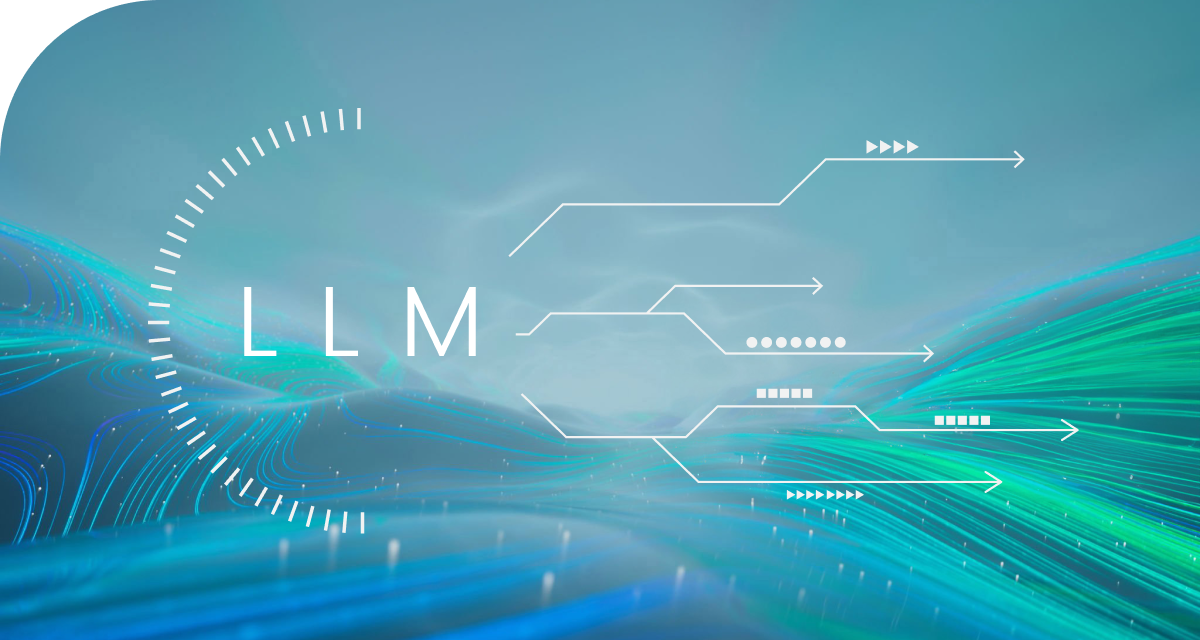A Comprehensive Guide to Large Language Models

The digital age has created a data deluge. Businesses grapple with extracting insights from this sea of information. Here’s where Large Language Models (LLMs) emerge as a powerful solution.
Imagine a computer program focused on a colossal dataset of text and code, encompassing books, articles, news reports, and even social media conversations. This flood of information equips the LLM with an exceptional grasp of language.
Think of it as a highly skilled information processor, having absorbed immense knowledge and the ability to analyze it with exceptional speed and accuracy. LLMs leverage this understanding to perform a wide range of tasks previously thought to require human-level intelligence.
How Does an LLM Work?
LLMs leverage complex artificial neural networks inspired by the human brain’s structure. These networks analyze massive amounts of text, learning relationships between words, their context, and even the underlying sentiment.
This empowers the LLM to understand the nuances of human language, generate different creative text formats, and perform various language-based tasks like translation.
To discover more about how LLMs work, visit Tastewise.
The Purpose of Large Language Models
Essentially, LLMs bridge the gap between human language and machine comprehension. Traditionally, computers have struggled to understand the complexities of human language, often interpreting it literally and missing the subtleties of meaning. Large Language Models, however, can go beyond simple processing.
They can understand the context in which words are used, identify the sentiment behind the language, and even generate different creative text formats.
This newfound ability to understand human language opens doors to a multitude of applications across various industries.
Why LLMs are Important
The significance of LLMs lies in their versatility. Unlike traditional AI tools that are designed for specific tasks, LLMs are adaptable and can be applied to a range of problems.
In finance, for instance, LLMs can analyze vast amounts of financial news and social media data to identify potential market trends at unprecedented speeds.
This can empower financial institutions to make informed investment decisions and mitigate risks. The applications extend far beyond finance.
LLMs can be used in healthcare to analyze medical records and research papers, in customer service to provide more natural and engaging interactions, and even in the creative field to generate new ideas and content.
Benefits of LLMs – A Boon for the Food Industry
The food industry is a prime example of how Large Language Models can unlock a treasure trove of possibilities. Imagine analyzing millions of customer reviews on food blogs and social media platforms.
LLMs, like Tastewise, can identify flavor preferences, emerging trends, and even hidden complaints within this vast amount of data.
This can empower food companies to develop innovative products that cater to specific consumer demands.
Additionally, certain Large Language Models can personalize recipe recommendations on recipe platforms and food delivery services.
By analyzing a user’s past preferences and dietary restrictions, LLMs can suggest recipes that are more likely to appeal to their tastes. This creates a more engaging user experience and can lead to increased customer satisfaction.
Limitations of LLMs
While powerful, LLMs are not without limitations. A key challenge is their dependence on the quality of the training data.
If the data used to train the LLM is biased or inaccurate, these biases can be reflected in the LLM’s outputs.
For instance, an LLM trained on a dataset of news articles that primarily feature male CEOs might perpetuate gender stereotypes in its text generation.
Additionally, LLMs can struggle with tasks that require real-world understanding or common sense. Understanding humor, navigating social cues, or applying knowledge to real-world situations are challenges that Large Language Model technology is still working to overcome.
Types of LLMs
The field of LLMs is constantly evolving, with new architectures and training techniques emerging. Different Large Language Model architectures are optimized for specific tasks.
Some LLMs excel at generating different creative text formats, like poems or code, while others are optimized for tasks like question answering or machine translation.
As the field progresses, we can expect to see even more specialized LLMs emerge, tailored to address the specific needs of different industries and applications.
The Future of Large Language Models
The future of LLMs is undeniably promising. As these models continue to learn and improve from the vast amount of data available, their capabilities will expand significantly.
We can expect even more sophisticated applications across diverse industries, potentially revolutionizing how we interact with information and technology.
Imagine a world where LLMs can not only understand the written language but also engage in spoken conversations, translate languages in real-time, or even write different creative text formats like movie scripts. The possibilities are truly limitless.
Large Language Models represent a significant step forward in the field of AI. Their ability to understand and process language opens doors to a multitude of applications across various industries, with the potential to transform how we access information, create content, and interact with technology.
As LLMs continue to evolve and overcome their current limitations, the possibilities for innovation are truly limitless.
We can expect Large Language Models to play an increasingly important role in shaping the future, from revolutionizing how businesses operate to enhancing our daily lives. The journey of LLMs has just begun, and the potential for groundbreaking advancements lies on the horizon.
Keen to learn more about LLMs and their capabilities? Discover Tastewise’s range of solutions, here.

